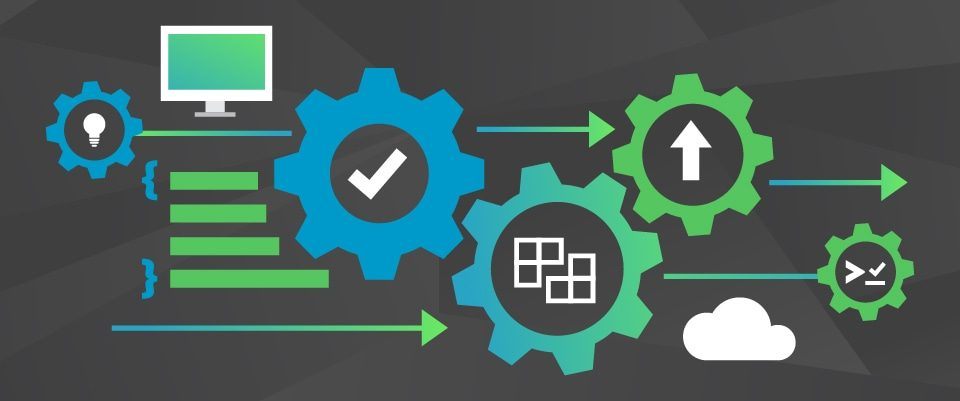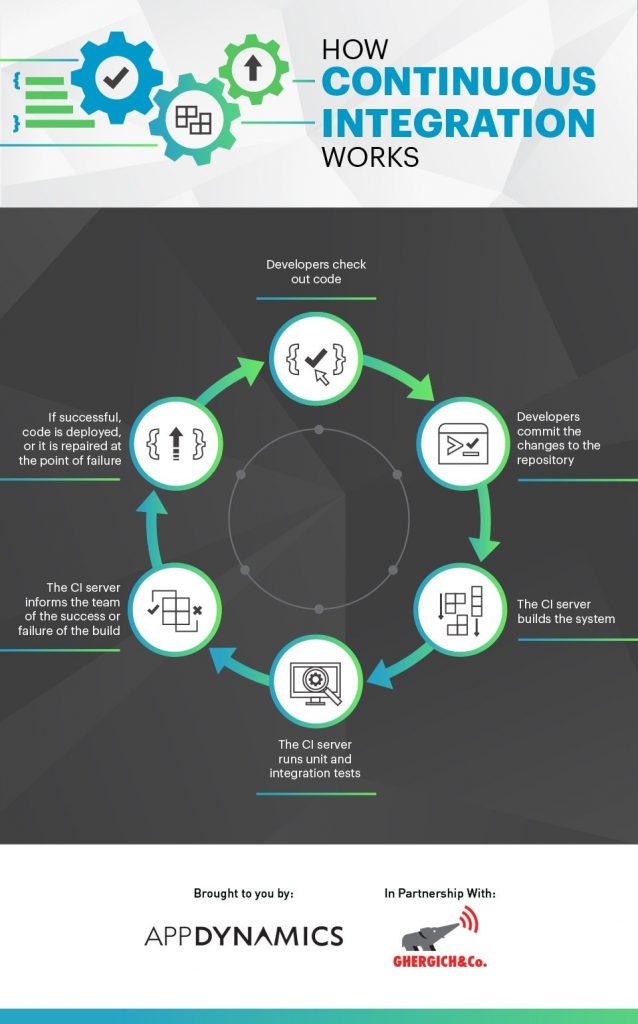How Continuous Integration Works, and The Big Benefit No One Talks About
Discover faster, more efficient performance monitoring with an enterprise APM product learning from your apps. Take the AppDynamics APM Guided Tour!
In DevOps, Continuous Integration (CI) is increasingly the integration method of choice, in large part because of the speed at which it enables the release of new features, bug fixes, and product update.
In a digital world that moves as fast as ours, programmers are applying new, creative ways of thinking to the software development process in a non-stop push for ever-faster turnaround times. In DevOps, Continuous Integration (CI) is increasingly the integration method of choice, in large part because of the speed at which it enables the release of new features, bug fixes, and product updates.
CI dictates that every time a developer pushes code to an application, an automated process grabs the current code from a shared repository, integrates the new build, and tests the software for problems. This approach leads to faster results and ensures software is tested on a regular basis, which enables further DevOps automation processes such as delivery, deployment, and experimentation.
How CI Works
With CI, the software code is contained in a shared repository, accessible by developers so they can “check out” code to individual workstations. When ready, they push the code back into the repository to commit changes. From there, the automated CI server takes over, automatically building the system and running unit and integration tests to ensure the code did not break another part of the software. If the build is unsuccessful, the server pinpoints where in the testing process the code failed, letting the team address it at the earliest point of failure.
This CI process occurs many times per day, meaning the system constantly builds and tests new code. The updated software can then be released manually, or DevOps teams can further automate the project by electing to have the system deploy and deliver the product.
Since developers don’t have to backtrack to find where code breaks, DevOps teams save big in terms of time and resources. And because the process is continuous, programmers never work on out-of-date products, or try to hurriedly push changes to keep up with demand or internal deadlines.
CI allows developers to automate long-running processes and use parallel containers or virtual machines to run tests and builds. Because these processes are automated, programmers can work on other tasks while everything runs in the background. And since the code is only merged once the build passes testing, the chances of breaking master code are greatly reduced.
The (not so) Secret Benefit of CI
Sure, CI saves time and reduces costs, but so does every other noteworthy innovation in technology or business processes these days. There’s another major reason CI is so successful that isn’t talked about as much because it’s more difficult to quantify than productivity and cost: team morale.
If you talk to any development team, they’ll tell you that almost nothing in the world is as frustrating as building a process, integrating it with the code, and then watching the software break. Not only have hours of work been wasted, but team members know that more hours lie in front of them trying to comb back through the process to pinpoint where it failed. As any business leader knows, an unhappy team results in an inferior and/or more costly product. As frustration mounts, work slows down. Then as a deadline approaches, changes are frantically pushed through, increasing the probability of a flaw in the master branch or a bug being deployed with the product.
The transparency of CI can be a big boost to the confidence level within DevOps. Suddenly, as developers work, they can see exactly where problems arise, which allows for a much faster response and repair. And if the build passes, team members can feel good about a job well done.
Takeaways for CIOs
The continuous integration approach to DevOps increases transparency, builds automation into processes, decreases costs by maximizing developers’ time, and creates repeatable processes upon proven successes. On top of all that, it relieves pressure from programmers and helps teams gain confidence.
Though there are variations among details of different platforms and approaches, the key tenets of CI hold true among development teams:
- Maintain a single source repository with easy access for developers
- Automate the build and testing processes
- Make sure every build occurs on an integration container or VM
- Utilize a production environment for testing
- Make the testing results and processes transparent and visible to teams
Conclusion
If you want more speed and more smiles out of your development team, consider applying a continuous integration approach to your DevOps processes. Make sure to consult both with your team and a CI service provider to determine what makes sense for your organization and ensures a smooth implementation. Then sit back and watch the code fly.
Discover faster, more efficient performance monitoring with an enterprise APM product learning from your apps. Take the AppDynamics APM Guided Tour!






